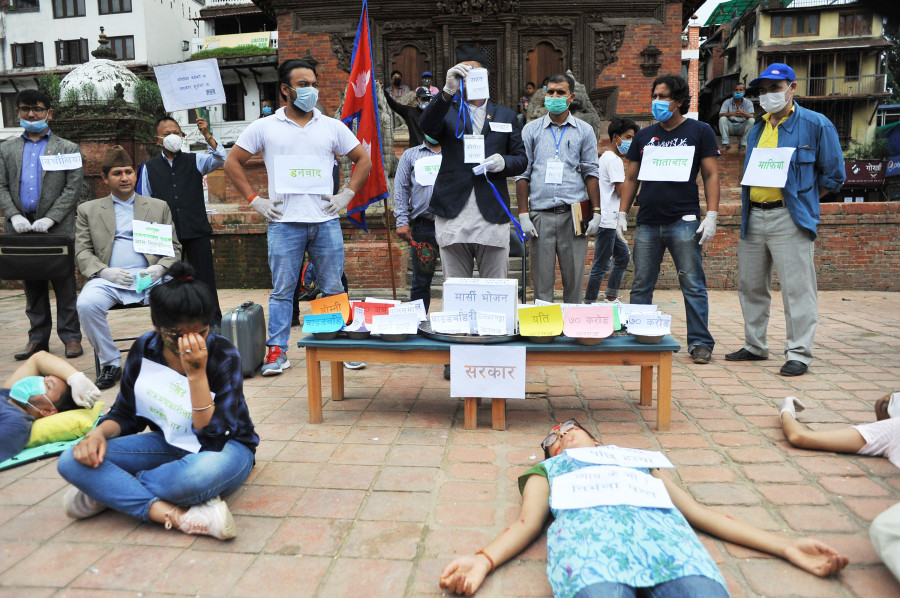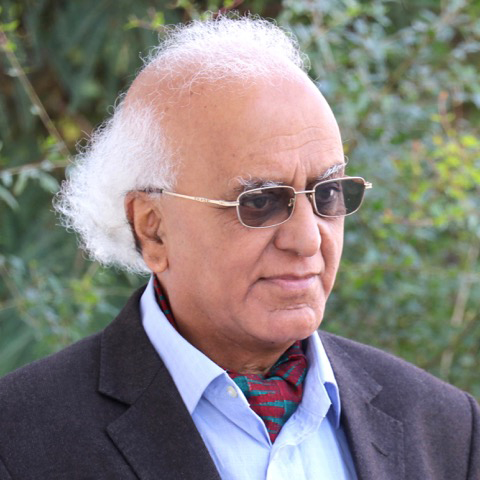Columns
Nepali theatre of the oppressed
The choice of the theatre for creating the effect of resistance heralds a new mode of awakening.
Abhi Subedi
Various strands of the theatre of the oppressed, voiceless and rebels were buckled up in a story in Kantipur daily filed by Laxmi Gautam on June 10. This is the story of a campaign of the street theatre of the oppressed launched by a young lady of Phidim named Sameekshya Neupane who was only four when her 13-year-old sister Meena Neupane was raped and murdered in a jungle near her house. Sameekshya never forgot the incident. She successfully transformed her trauma into performance art and launched her campaign of the theatre of the oppressed by bringing the girl students of other schools to perform the plays she writes and directs. Sameekshya, a student of class 10 at Phidim Secondary School who launched the theatre of the oppressed from the theatre of her school, vows to continue this as the only means of alerting and awakening society to the oppression suffered everyday by women of all age groups in this country.
Sameekshya's performance is one among the many examples of street theatre in Nepal. These theatres are performed in the open, for which reason they owe a legacy to the first street theatre introduced in 1980 by Ashesh Malla of Sarwanam and his friends like Sunil Pokharel and Puskar Gurung. Younger directors like Ghimire Yubaraj and others gave continuity to this tradition. These theatres emanated in the capital and were taken to different parts of the country. Theatre groups from places like Janakpur and Dharan were also active in this form of performance art.
Educational theatre
Nepali theatre leaders who are informed and educated have used the theory of the Brazilian writer Augusto Boal (1931-2009) published in his book The Theatre of the Oppressed (1985). Sunil Pokharel in his resume mentions that he and his group, mainly under the nomenclature Kachahari, did approximately 700 performances for a UNICEF programme in more then 45 districts of Nepal. That is a colossal figure. I have no way of verifying the figure, but what is true is that Kachahari theatre has been the most widely practised theatre of the oppressed in this country. But this theatre has also been named educational theatre.
Sunil maintains that these performances did follow Boal's legislative theatre of the oppressed that began with educational exposure of theatre persons to this mode of performance. I have cited in my book Nepali Theatre as I See It (2006:209) Sunil Pokharel's experience about Forum theatre, which began when he was invited by a Danish institution called MS Nepal in 2004 to help them with the theatre for education. Later Sunil received orientation from Boal himself. Boal was not happy about the way non-governmental organisations had misused his form of theatre around the world. But his model of the theatre of the oppressed has proved to be educational and powerful.
Ghimire Yubaraj, director of Shilpee Theatre, is still going strong with such forms of open theatre. He and his team must be performing such plays in some part of the country as I write this story. I have one very eloquent memory to share. Senior director Puskar Gurung of Dabali, who played an important role in the mid-1990s in training and promoting street theatre performances in remote places like Banke, Rolpa, Doti, Achham, Damak and Dharan, invited me in the early post-insurgency years to listen to the narratives of young people of the theatre who had brought harrowing stories from the areas affected by the Maoist conflict, and write short plays based on them.
It was a challenging experience for them even though they visited the spots well after the end of the war in 2006. Some of those who had heard people tell their stories of suffering during the war were so traumatised that they were not able to fully narrate them. I don't remember what Dabali did with these stories, but I could not write a single play based on them for two reasons even though that was a peaceful time and you could perform the stories of the war. First, the theatre of the oppressed should generate the performances by visiting the spot and not by writing plays based on the narrated stories. Second, the theatre of the oppressed should address a community, a group and the sufferers directly to project a message of change. But for the performance of street theatre, you should find a balance between the raw pain and sense of mission as in Sameekshya's performance, and in the model propounded by Augusto Boal and widely practised in many places in the world today.
The theatre of the oppressed has become a free form that is used more for its emotional and political rather than its theatrical value because it is an accessible and viable form for all who want to project their sense of discontent and resistance. The sense of presentism has always been the main content of such form of street theatre. But what should be noted here is that the degree of intermingling of the actors with the audience has increased more than before.
For example, the actors of Sarwanam street theatre in the 1980s were open and accessible to the public, but they remained true to their assigned textual roles. But in the theatre forms of resistance, such exclusiveness is broken. Characters and the audience become part of a common movement. The essence of Boal's theatre is that the audience should participate; the sphere of the theatre expands and changes when characters from the audience become part of the story. But he was careful about maintaining the theatrical quality of the sufferers by not giving in to the cheaper forms of propaganda. Boal saw universal features in the language of the oppressed citizens.
Principal mantra
Sameekshya’s choice of the theatre of the oppressed citizens is appropriate and wise because empowerment of the communities by spreading information in a direct and visceral manner is the principal mantra of the theatre of the oppressed citizens in Nepal and elsewhere. In Nepal, the choice of the theatre for creating the effect of resistance, especially by women and the marginalised communities, heralds a new mode of awakening. Credit goes to the Nepali theatre campaigners for this methodology.
All the performers of street theatre may not have been exposed to proscenium theatre, but they have understood the effectiveness of the theatre that is performed on the street and open grounds with a mission. The two most important means of the theatre of the oppressed people are body and clear language. But those who perform the theatre of the oppressed people should also be careful to save the theatre genre because it becomes effective only through its important quality as art. The practitioners of the Nepali open theatre of the oppressed people have created a tradition, and they should respect what they have established.




 6.84°C Kathmandu
6.84°C Kathmandu















